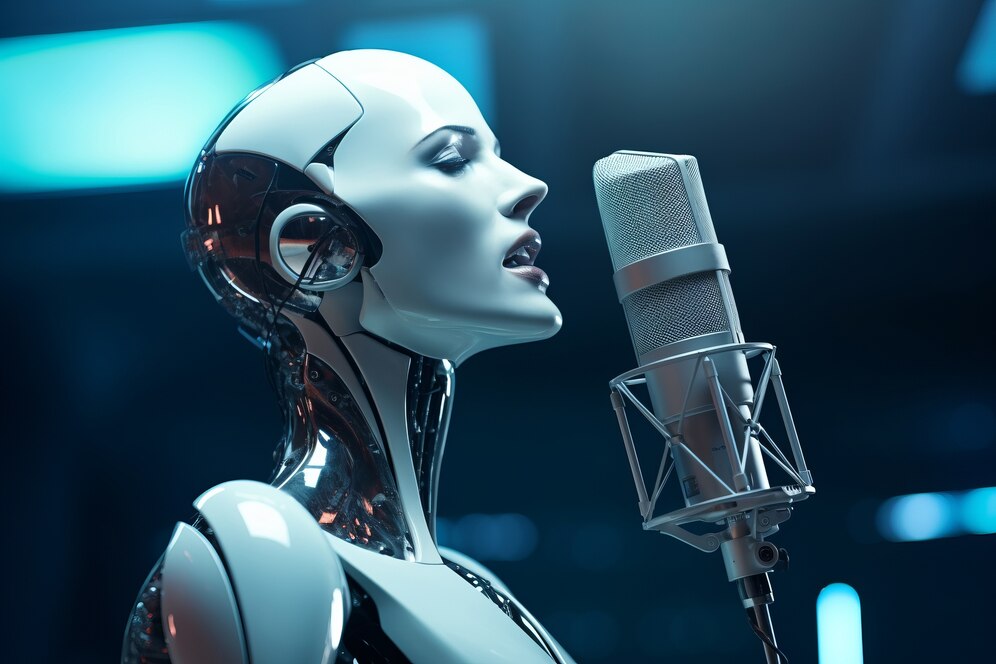In the past few decades, artificial intelligence (AI) has transformed numerous aspects of our daily lives, and one of the most fascinating developments is in the realm of voice generation. AI voice generators have evolved from basic text-to-speech (TTS) systems to advanced technologies capable of producing emotionally intelligent voices that resonate with listeners on a deeper level. This blog post will explore the journey of AI voice generators, highlighting key milestones, the technology behind them, and their implications for various industries.
The Beginnings of Text-to-Speech Technology
The history of voice synthesis dates back to the 1950s and 1960s, when researchers began experimenting with early forms of TTS systems. These systems primarily relied on concatenative synthesis, where pre-recorded speech segments were pieced together to form coherent speech. The output was robotic and lacked the emotional nuance we associate with human speech.
One of the earliest examples of TTS technology was the “Dudley 1” synthesizer, developed by physicist and engineer Kenneth G. B. Dudley at the Massachusetts Institute of Technology (MIT). While groundbreaking for its time, the synthesized voice sounded mechanical, limiting its applications to specialized fields such as telecommunications and accessibility tools for the visually impaired.
The Rise of Digital Signal Processing
As technology progressed, particularly with the advent of digital signal processing (DSP) in the 1980s, the quality of TTS systems improved significantly. DSP allowed for more sophisticated manipulation of sound waves, enabling smoother and more natural-sounding speech synthesis. However, even with these advancements, the emotional depth in synthesized voices was still lacking.
In the 1990s, companies began developing commercial TTS products that catered to consumers, paving the way for the first wave of voice-enabled applications. These systems could read text aloud, assist with navigation, and provide information in customer service environments. Despite the advancements, they were still far from achieving the emotional intelligence required to engage listeners fully.
The Emergence of Neural Networks
The real turning point in the evolution of AI voice generators came with the introduction of neural networks in the 2010s. This technology allowed machines to learn patterns and generate more human-like voices. The use of deep learning algorithms enabled AI to analyze vast amounts of audio data, leading to significant improvements in voice quality and intonation.
One notable breakthrough was the introduction of WaveNet, a generative model created by DeepMind in 2016. WaveNet marked a departure from traditional TTS techniques by generating raw audio waveforms directly. The result was a voice that sounded more natural and expressive than ever before. This innovation opened up new possibilities for voice synthesis across various applications, including virtual assistants, audiobooks, and video content.
Emotionally Intelligent Voices
As AI voice generators continued to evolve, developers began to focus on incorporating emotional intelligence into the voices they produced. The ability to convey emotions such as joy, sadness, anger, and empathy adds depth to digital interactions, making them more relatable and engaging for users.
-
Understanding Emotion in Voice
Emotional intelligence in AI voice generation involves more than just modulating pitch or speed; it requires an understanding of context and the ability to interpret the subtleties of human communication. Developers began using large datasets of human speech that included emotional cues, allowing AI to learn how to mimic these nuances effectively.
By employing techniques such as prosody modeling, which analyzes the rhythm and intonation of speech, AI voice generators can now produce speech that sounds not only realistic but also emotionally resonant. This capability has wide-ranging applications in fields such as gaming, marketing, and e-learning, where emotional connection can significantly enhance user experience.
-
Real-World Applications
The advancements in emotionally intelligent AI voice generators have resulted in their adoption across various industries:
- Gaming: In video games, emotionally rich voice acting enhances storytelling and character development. AI voice generators can create unique voices for multiple characters, allowing for dynamic interactions and a more immersive experience.
- Customer Service: Businesses are increasingly using AI voice technology in chatbots and virtual assistants. These AI-driven voices can express empathy and understanding, improving customer interactions and satisfaction.
- E-Learning: Educational platforms are utilizing AI voice generators to create engaging content that resonates with learners. The ability to convey emotion can help keep students engaged and improve information retention.
- Content Creation: Content creators are turning to AI voice generators to streamline their production processes. Tools like AI video maker apps can integrate high-quality voiceovers seamlessly, allowing for more efficient content creation without sacrificing emotional depth.
The Accessibility Revolution
AI voice generators have also played a crucial role in improving accessibility for individuals with disabilities. Text-to-speech technology has become a vital tool for those who are visually impaired or have reading difficulties. The advancements in voice synthesis have made these tools more effective and user-friendly.
Many AI voice generator free options are now available, allowing users to access high-quality voice synthesis without significant investment. This democratization of technology ensures that more individuals can benefit from the enhanced communication and interaction that AI voices provide.
Ethical Considerations
While the evolution of AI voice generators has brought numerous benefits, it also raises ethical concerns. The potential for misuse, such as generating fake audio clips or impersonating individuals, poses significant risks. As the technology becomes more accessible, it’s essential to establish ethical guidelines and regulations to prevent misuse.
Additionally, creators and developers must be mindful of the representations and stereotypes conveyed through AI voices. Ensuring diversity and inclusivity in voice options is crucial for creating authentic and relatable experiences for all users.
The Future of AI Voice Generation
As we look to the future, the possibilities for AI voice generation seem limitless. Continued advancements in machine learning, natural language processing, and emotional intelligence will further enhance the capabilities of AI voice generators. We can expect to see even more natural and expressive voices that can adapt to various contexts and user preferences.
Innovations such as real-time voice modulation and cross-lingual voice synthesis will likely emerge, allowing for even greater personalization and global reach. The integration of AI voice generators with other technologies, such as virtual reality and augmented reality, will create immersive experiences that blend the digital and physical worlds.
Conclusion
The journey of AI voice generators from simple text-to-speech systems to emotionally intelligent voices has been nothing short of remarkable. With advancements in neural networks and a growing focus on emotional intelligence, these technologies are transforming how we interact with digital content.
As AI voice generators continue to evolve, they hold the promise of creating deeper connections between humans and machines. Whether in gaming, education, customer service, or content creation, the emotional depth that AI voices can provide is set to redefine digital storytelling and user engagement for years to come. Embracing these advancements responsibly will be key to harnessing their full potential while ensuring ethical considerations are met.






